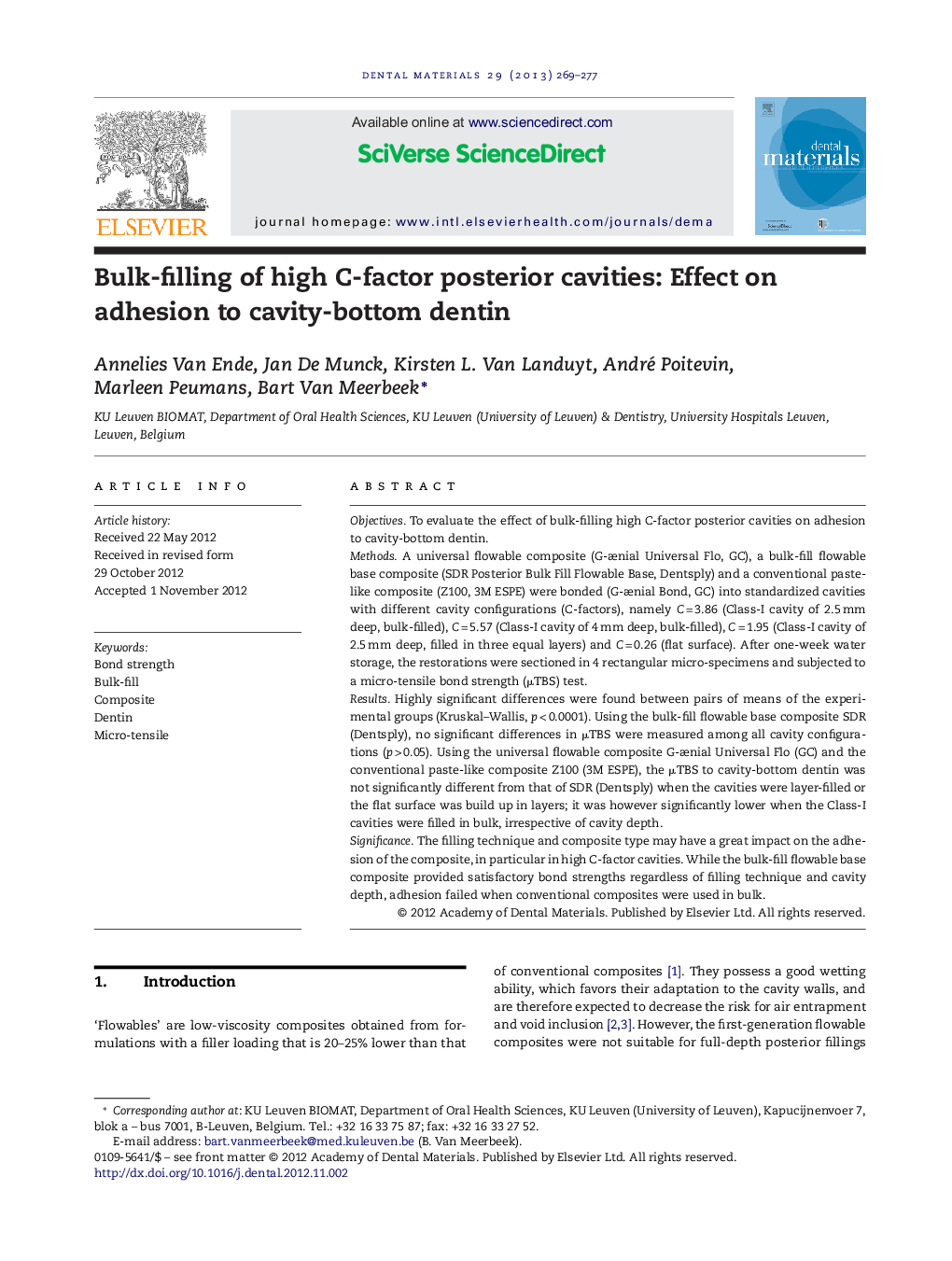| Article ID | Journal | Published Year | Pages | File Type |
|---|---|---|---|---|
| 1421278 | Dental Materials | 2013 | 9 Pages |
ObjectivesTo evaluate the effect of bulk-filling high C-factor posterior cavities on adhesion to cavity-bottom dentin.MethodsA universal flowable composite (G-ænial Universal Flo, GC), a bulk-fill flowable base composite (SDR Posterior Bulk Fill Flowable Base, Dentsply) and a conventional paste-like composite (Z100, 3M ESPE) were bonded (G-ænial Bond, GC) into standardized cavities with different cavity configurations (C-factors), namely C = 3.86 (Class-I cavity of 2.5 mm deep, bulk-filled), C = 5.57 (Class-I cavity of 4 mm deep, bulk-filled), C = 1.95 (Class-I cavity of 2.5 mm deep, filled in three equal layers) and C = 0.26 (flat surface). After one-week water storage, the restorations were sectioned in 4 rectangular micro-specimens and subjected to a micro-tensile bond strength (μTBS) test.ResultsHighly significant differences were found between pairs of means of the experimental groups (Kruskal–Wallis, p < 0.0001). Using the bulk-fill flowable base composite SDR (Dentsply), no significant differences in μTBS were measured among all cavity configurations (p > 0.05). Using the universal flowable composite G-ænial Universal Flo (GC) and the conventional paste-like composite Z100 (3M ESPE), the μTBS to cavity-bottom dentin was not significantly different from that of SDR (Dentsply) when the cavities were layer-filled or the flat surface was build up in layers; it was however significantly lower when the Class-I cavities were filled in bulk, irrespective of cavity depth.SignificanceThe filling technique and composite type may have a great impact on the adhesion of the composite, in particular in high C-factor cavities. While the bulk-fill flowable base composite provided satisfactory bond strengths regardless of filling technique and cavity depth, adhesion failed when conventional composites were used in bulk.
